Is Travel Finally Back? New Report Reveals Record Tourism Rebound
See how travel is making a continued comeback since taking a dip during the pandemic.
- Newsletter sign up Newsletter
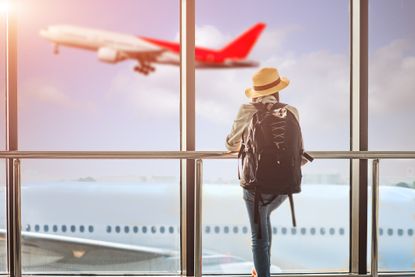
The pandemic and subsequent recovery battered the global travel industry. At first, cratering demand led to mass layoffs among cruise lines , airlines , hotel groups and other enterprises dependent on travel. Once health risks receded , there was a sudden increase in demand, catching many travel businesses off guard. Supply chain kinks, soaring energy costs, rampant delays and understaffing led to months of traveler misery that has only recently eased up.
Despite the rocky road, travelers apparently will not be deterred from their trips, according to newly released data charting the surprising strength of the travel industry at the start of summer.

Travel exceeds pre-pandemic high
Travel industry news site Skift recently released their June 2023 Travel Health Index report, which reveals global travel ful ly rebounded and further exceeded pre-pandemic strength compared to just a few months ago.
Subscribe to Kiplinger’s Personal Finance
Be a smarter, better informed investor.

Sign up for Kiplinger’s Free E-Newsletters
Profit and prosper with the best of expert advice on investing, taxes, retirement, personal finance and more - straight to your e-mail.
Profit and prosper with the best of expert advice - straight to your e-mail.
The Travel Health Index measures the travel industry’s performance using 84 travel indicators with data from 22 partners. As of June 2023, the global index sat at 104 , an increase of 4% over the 100 peak pre-pandemic rating from April 2019. It also marks a 1% increase from the May 2023 index rating of 103.
At its lowest point during the early days of the pandemic, the Travel Health Index dipped to 20 in April 2020, a sign travel performance had sunk to 20% of April 2019 levels. Three years later, travel has fully rebounded and continually set new records across all global regions.
Referencing the strength of the U.S. travel market, Skift research analyst Saniya Zanpure tells Kiplinger they do not see travel performance slowing down in the U.S. "Since airlines, vacation rentals, and hotels in the U.S. outperformed 2019 performance levels, the travel index for the country in June 2023 is 8 percentage points above June 2019," she said.
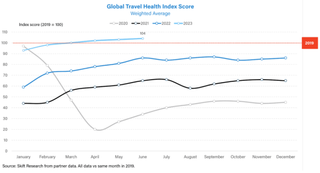
Global travel gains aren't equal
The biggest winner of the global travel recovery is Latin America, the region that's proved the most resilient through the pandemic. By early 2022, Mexico’s impressive travel rebound accelerated, and the larger region began to exceed pre-pandemic performance. Latin America's travel index performance for June clocks in at a globe-leading 110. All other regions (and 17 out of 22 countries tracked in the report) had recovered or exceeded their pre-pandemic travel levels, albeit with less impressive marks.
The biggest outliers among the developed tourist destinations are Russia (67.9) and Hong Kong (69.7), whose continually lagging performance is dragging down the global index – and their respective regions. Russia's deteriorated tourism picture is likely a product of the ongoing war in Ukraine , resulting in extensive "do not travel" advisories and departing businesses . Meanwhile, factors including exceedingly harsh pandemic restrictions and democratic backsliding can be counted toward Hong Kong's travel woes.
The global car rental industry also diverged from other travel sector industries , receding to 108 in June from a record April mark of 112. Only North America increased car rental performance month over month. Still, despite the measurable dip since April, global car rental performance remains 8 percentage points above pre-pandemic levels.
How travelers can save in a pricey recovery
Travel is hotter than ever, as millions fully exit their pandemic hesitance to embrace tourism and business travel. NerdWallet's Travel Price Index reports that the overall cost of travel has grown 14% since the June 2019 pre-pandemic travel season.
We've pulled together a number of helpful travel resources at Kiplinger, including our rankings of the cheapest countries to visit and the best travel websites .
Use the following tips from Kiplinger contributor Becca van Sambeck to save money while planning a vacation despite budget-busting price increases:
- Plan your trip early, no later than 28 days before departure
- Consider flexibility on location to maximize savings
- Consider camping and cabins instead of hotels
- Travel with a group to lower the average cost of lodging
- Use those credit card points and airline miles
Related Content
- The 10 Cheapest Countries to Visit
- How to Budget for a Vacation When Prices Keep Rising
- Should You Use Credit Card Portals to Book Travel?
Ben Demers manages digital content and engagement at Kiplinger, informing readers through a range of personal finance articles, e-newsletters, social media, syndicated content, and videos. He is passionate about helping people lead their best lives through sound financial behavior, particularly saving money at home and avoiding scams and identity theft. Ben graduated with an M.P.S. from Georgetown University and a B.A. from Vassar College. He joined Kiplinger in May 2017.

Learn how to maximize investing in a 529, a state-sponsored college education savings account for qualifying educational expenses.
By Emma Patch Published 20 April 24

Older men today came of age amid the social upheavals of the 1960s and ’70s, but their formative years were deeply planted in the traditional world of segregation and sexual stereotyping.
By Dawn Fallik Published 20 April 24
- Contact Future's experts
- Terms and Conditions
- Privacy Policy
- Cookie Policy
- Advertise with us
Kiplinger is part of Future plc, an international media group and leading digital publisher. Visit our corporate site . © Future US, Inc. Full 7th Floor, 130 West 42nd Street, New York, NY 10036.
Has America’s air travel boom peaked?
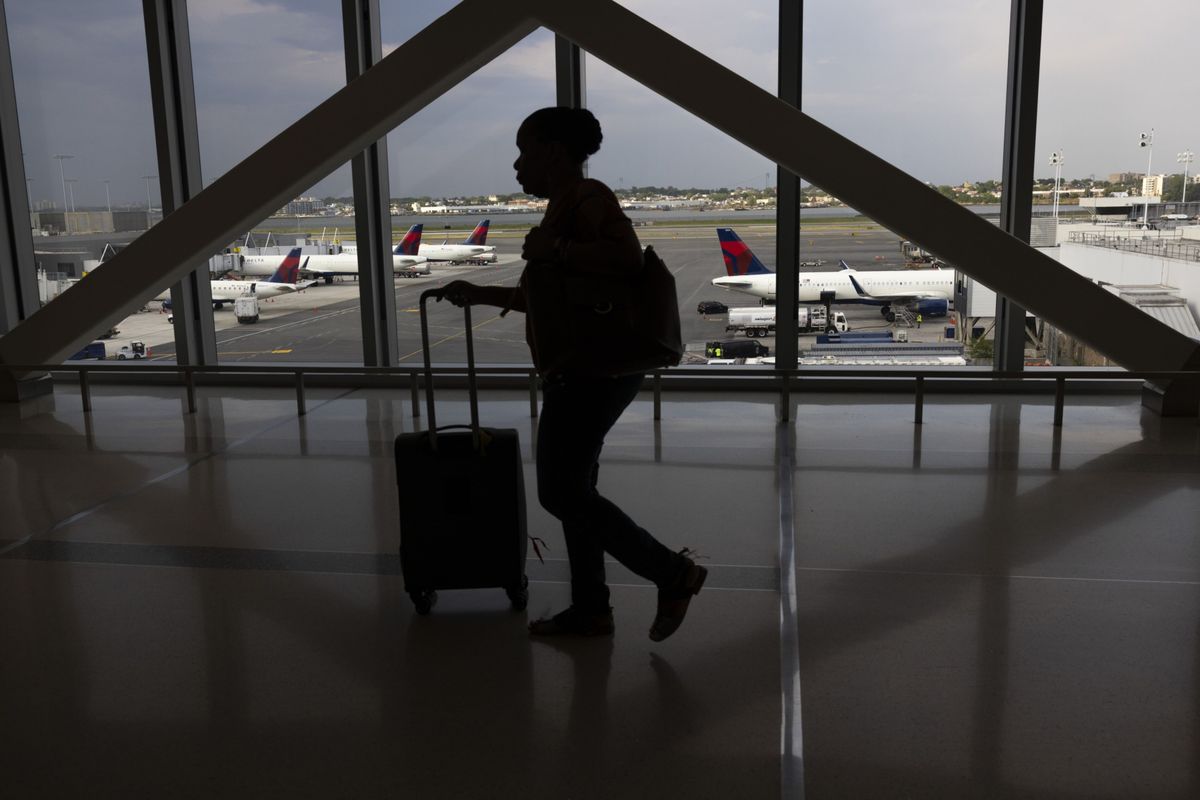
The air travel boom in the U.S. appears to be fading.
Purchases by U.S. consumers directly from major domestic airlines declined across the board in the second quarter, marking the first drop in more than two years, according Bloomberg Second Measure.
The data isn’t a full picture, though. It tracks anonymous credit and debit card transactions made with carriers, but excludes booking sites and corporate sales.
Americans splurged on air travel over the past year as pandemic restrictions lifted; not even a surge in ticket prices slowed them down.
But after facing the highest inflation in decades, consumers have been reducing all kinds of discretionary purchases, including apparel, electronics and sit-down restaurants. Now it appears they’ve added flying to that list.
This softness has the potential to derail a rebound that has boosted results across the industry.
Delta Air Lines and United Airlines recently raised their annual profit forecasts on continued strength in international bookings.
And a record number of passengers are expected industry-wide this summer.
But Alaska Air, which is focused on the U.S. and North America, said it’s bracing for a hit to this quarter’s results as it contends with declining prices and softening demand for domestic travel.
Fares that were “really strong” through June have declined from record levels in 2022, but remain above 2019 prices, according to Alaska’s Chief Financial Officer Shane Tackett.
Southwest Airlines posted second-quarter sales last week that topped Wall Street’s expectations, but worries about how well demand will hold up the rest of this year and the carrier’s plan to boost flying capacity hammered the stock.
In July, the shares of the five largest U.S. carriers have all declined, compared with about a 3% gain for the S&P 500. Investors will get more industry insights on Tuesday when JetBlue reports.
One bullish case for the industry is that lower ticket prices will encourage more purchases.
But transactions fell in the second quarter from the same period a year earlier for 8 of the 10 major U.S. airlines tracked by Second Measure.
The median decline was 5.3%, the biggest drop since the first quarter of 2021.
Typically, fliers buy tickets weeks and months in advance, so the summer boom has mostly been booked. Second Measure tracks when flights are purchased.
That differs from airlines because they only record them as revenue when they are flown.
For example, a ticket purchased in March for an August departure would be counted as revenue in the third quarter when the flight is made, not the first.
Until a flight happens, the companies consider it a short-term liability on their balance sheets.
So-called air traffic liability is the value of flights that have been sold, but haven’t been flown.
So far five large carriers have reported their second quarters, and all but Southwest have experienced weaker growth in air traffic liability, or worse.
American Airlines, the second-largest U.S. carrier, posted its first decline in air traffic liability since the depths of the pandemic in 2020.
Connecting Spokane residents to the internet at home and on-the-go
There is a significant challenge in Washington for communities big and small. Connecting Spokane residents to the Internet at Home and On-the-Go
We've detected unusual activity from your computer network
To continue, please click the box below to let us know you're not a robot.
Why did this happen?
Please make sure your browser supports JavaScript and cookies and that you are not blocking them from loading. For more information you can review our Terms of Service and Cookie Policy .
For inquiries related to this message please contact our support team and provide the reference ID below.
- Credit cards
- View all credit cards
- Banking guide
- Loans guide
- Insurance guide
- Personal finance
- View all personal finance
- Small business
- Small business guide
- View all taxes
You’re our first priority. Every time.
We believe everyone should be able to make financial decisions with confidence. And while our site doesn’t feature every company or financial product available on the market, we’re proud that the guidance we offer, the information we provide and the tools we create are objective, independent, straightforward — and free.
So how do we make money? Our partners compensate us. This may influence which products we review and write about (and where those products appear on the site), but it in no way affects our recommendations or advice, which are grounded in thousands of hours of research. Our partners cannot pay us to guarantee favorable reviews of their products or services. Here is a list of our partners .
Travel Is Back, in Case You Missed It

Many or all of the products featured here are from our partners who compensate us. This influences which products we write about and where and how the product appears on a page. However, this does not influence our evaluations. Our opinions are our own. Here is a list of our partners and here's how we make money .
Many people are curious when travel will come back. This is a difficult question to answer, because in many ways it already has — travel is nearly back to pre-pandemic levels and has been for months.
The number of passengers who entered Transportation Security Administration checkpoints in January and February of 2022 was down only 19% from the same period in 2019. That's a big recovery from the pandemic lows, when the number of passengers was down 89% in the second quarter of 2020 relative to the same period in 2019.
A closer look at the numbers
In fact, passenger numbers edged closer and closer toward pre-pandemic levels each quarter in 2021, despite the delta and omicron variants' surges.
This is especially surprising given that business travel, which usually accounts for a large portion of air traffic volume, has been slow to recover. According to a February poll by the Global Business Travel Association, corporate travel buyers estimate that they are only making 33% of bookings compared to pre-pandemic levels.
So planes are full, despite business travelers staying home. Which means that leisure travel isn’t just picking back up. It is already way up.
And yet, “returning to pre-pandemic levels” whitewashes the complexity of how the travel industry has changed.
» Learn more: The best travel credit cards right now
Remote work has changed the game
Business travel may remain slow, but a new kind of traveler has helped fill the gap: remote workers. Working from anywhere means leisure travel is no longer limited to vacation for these so-called “laptop luggers.” Some have even become full-time digital nomads , traveling from one location to the next without a permanent home.
According to a survey by Deloitte, workers who could bring their jobs with them planned twice as many holiday trips as those who planned to disconnect from work. This suggests a fundamental shift in the way remote work has enabled more frequent travel.
And it’s not just how often, but when these travelers are choosing to leave home. Rather than cramming vacations into a few months in the summer and a few weeks in the winter, untethered travelers are now expanding the “ shoulder seasons ” in the spring and fall, when leisure travel usually dips.
A report from AirDNA , which tracks vacation rental data, suggests that peak travel seasons have become flatter and broader in some destinations. For example, vacation rental bookings along the Maine coast, which includes Acadia National Park, were up 50% in May and 42% in October of 2021. However, demand was actually down slightly during summer months compared to 2019.
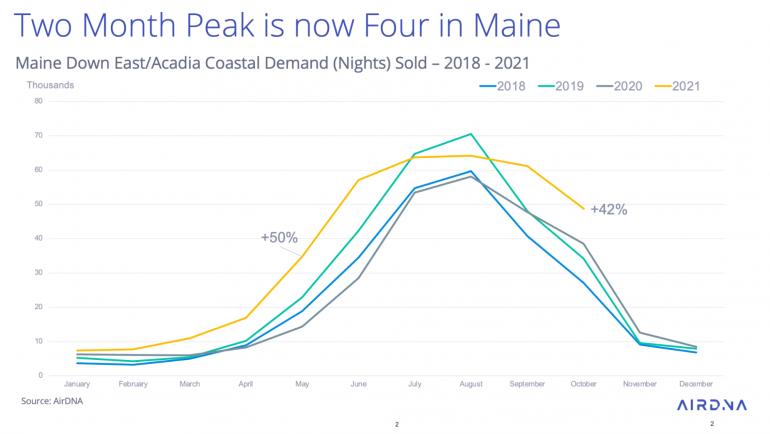
AirDNA data shows a shift in seasonal vacation rental trends. (Graph courtesy of AirDNA)
In many ways, this is good for everyone. Tourist and accommodation businesses will enjoy longer seasons, and vacationers won’t be competing with each other so feverishly during a few peak months.
It’s also good news for airlines, which will shuttle far more passengers over a longer travel window than they can over a short period of peak demand.
Consider Thanksgiving, which usually taps out the limited supply of aircraft in the few days that workers are able to get off work and travel. Remote workers can book longer trips that avoid peak dates, saving money and flattening the peak, while airlines can move more passengers overall.
International travel has been slower to recover
Peeling the “travel is back” onion back one more layer, we can see that it’s more complicated for international travel. Although domestic leisure travel has bounced back, border and testing restrictions have slowed the pace for U.S. travelers heading overseas.
According to data from the International Trade Administration, 2.5 million U.S. citizens departed the country in January 2022 compared to nearly 4 million in 2019. This is far more than the 1 million who departed in 2021, but still a far cry from full recovery.
If you go back another layer, the picture becomes even more interesting. Travel by U.S. citizens to Mexico actually exceeded 2019 levels, while Australia — which only recently opened its borders — saw only 11% as many U.S. visitors in January 2022 compared to 2019. Travel to Europe in January 2022 stood at only 44% of pre-pandemic levels.
On the flip side, only 44% as many overseas travelers came to the U.S. in January. So businesses that depend on foreign tourists remain hard hit by the pandemic, even as domestic travel rebounds.
» Learn more: How to save money on international flights
Travel is back — it just looks different
If you live in a major U.S. city that followed lockdown restrictions rigorously for the past two years, you might be surprised to learn how much the travel industry has already rebounded.
It’s worth reconsidering some basic ideas of what travel coming "back" really means. In terms of raw numbers, nearly as many travelers are passing through airports now as they were in 2019. But the pattern and distribution of these travelers has fundamentally changed.
Remote work has loosened the restrictions on how and when many people travel. This means longer seasons, fewer peaks and possibly more travelers overall. That said, most of this travel remains domestic, and the number of foreign tourists visiting the U.S. is far from “back.”
How to maximize your rewards
You want a travel credit card that prioritizes what’s important to you. Here are our picks for the best travel credit cards of 2024 , including those best for:
Flexibility, point transfers and a large bonus: Chase Sapphire Preferred® Card
No annual fee: Bank of America® Travel Rewards credit card
Flat-rate travel rewards: Capital One Venture Rewards Credit Card
Bonus travel rewards and high-end perks: Chase Sapphire Reserve®
Luxury perks: The Platinum Card® from American Express
Business travelers: Ink Business Preferred® Credit Card
On a similar note...

A travel boom is looming. But is the industry ready?
If things go well, we might be at the threshold of a new age of travel. Although COVID-19 variants may affect conditions, it seems only a matter of time before travelers in some parts of the world hit the road and take to the skies again, thanks to rising vaccination rates and manageable caseloads. Some countries have begun gingerly relaxing travel restrictions and reopening borders.
As the worst effects of the COVID-19 pandemic ebb, most indicators point to travel coming back—with a vengeance—as people look to reconnect, explore new destinations, or revisit reliable favorites. Many just want to get away from the confines of their homes. A McKinsey survey reveals traveling to be the second-most-desired activity among respondents (in first place: dining out). In the United States, air travel has hit two million daily passengers, closer to the prepandemic level of around 2.5 million than to the low of around 90,000, in April 2020. Hotel reservations and rental-car bookings are surging.
All these trends should taste sweet for the industry, but ill-prepared companies may find themselves facing the wrath of a cohort of leisure-focused vacationers who might already be struggling to keep up with new travel protocols. If the industry doesn’t work to increase capacity now, the ecosystem may buckle under the pressure, forcing travelers to endure long wait times and inflated prices.
This article projects two broad trajectories of how travel will likely bounce back, comparing countries that have near-zero caseloads with those that have more, but manageable, caseloads and higher vaccination rates. In both scenarios, travel companies that don’t prepare themselves for the forthcoming influx of travelers risk missing out on a valuable opportunity to recoup losses incurred during the height of the pandemic. On the flip side, we believe that by focusing on four key areas—building capacity, investing in digital innovation, revisiting commercial approaches, and learning from critical moments—travel companies can seize value as they exceed the needs and demands of their customers.
The tale of two travel recovery paths
Wherever in the world you look, you’ll see people itching to travel. Most high-income earners have not lost their jobs. In the United States, the savings rate among this demographic is 10 to 20 percent higher now than before the pandemic, and such people are eager to spend their money on travel. Leisure trips are expected to lead the rebound, with corporate travel trailing behind.
A recent survey of 4,700 respondents from 11 countries around the world, conducted by the International Air Transport Association (IATA), revealed that 57 percent of them expected to be traveling within two months of the pandemic’s containment, and 72 percent will do so as soon as they can meet friends and family. In our China travel survey, we see more and more respondents yearning for leisure trips further afield; 41 percent say they want their next trip to be outside China, the highest level we’ve seen, despite borders remaining sealed.
Yet it’s worth noting that despite the near-universal desire to travel, countries will likely manage their plans to reopen differently. Two main factors come into play here: current COVID-19 caseloads and vaccination rates. People living in countries with limited access to vaccines and uncontainable levels of cases—such as a number of countries in Africa and Southeast Asia—will continue to be bound by tight travel restrictions for some time to come.
Travel will take off in and between countries with manageable caseloads
We can expect a surge in travel in (and between) countries with manageable and moderate COVID-19 caseloads and vaccine access. These regions are willing to accept rising case levels as long as death and hospitalization rates stay low. In many European countries and the United States, a significant portion of the population has been inoculated. Such people feel safe enough to travel both domestically and internationally, especially with the introduction of safety measures such as the EU-issued digital health certificates given to people vaccinated against COVID-19. Despite fluctuating rates of new caseloads in these regions, the efficacy of the vaccine so far (to reduce the spread of the disease and avoid its worst effects) gives many people enough feeling of security to travel.
Countries in Europe that have gotten used to living with manageable caseloads of COVID-19 have begun to welcome visitors without asking them to quarantine: Iceland (March 2021), Cyprus (May 2021), and Malta (June 2021). In addition, Europe is open to vaccinated US travelers. After the US Centers for Disease Control and Prevention (CDC) started approving cruise vessels with conditional sailing certifications to enter the country, a Florida federal court ruled in June 2021 that CDC-issued regulations should serve only as nonbinding guidelines, further reducing restrictions on tourists.
If past instances serve as indicators, we’ll see travel demand soaring once travel restrictions are eased and freedom of mobility returns.
Domestic trips will lead the recovery of travel in near-zero countries
However, a slightly different picture is emerging for countries with near-zero caseloads. Countries in this group include Australia, China, New Zealand, and Singapore. Their governments face a difficult trade-off. They can open up national borders without quarantines—which will almost certainly lead to increased local transmissions of COVID-19 and an increase in new cases, especially in countries with low vaccination rates, such as Australia and New Zealand. Or, they can choose to continue imposing strict restrictions and quarantine measures until the pandemic has truly passed, which would deter all but the most determined of travelers. Unlike places that have adjusted to living with COVID-19, even a moderate increase of cases in countries with caseloads near zero would likely be unacceptable to the public.
That’s not to say there are no travel opportunities in these countries. First, we’ll likely see increased interest in domestic travel, especially for large countries with sizable home markets, such as Australia and China, which have traditionally been net exporters of tourists. With few international destinations open to visit, this group of travelers will likely seek out vacation experiences within their nations’ borders. China has seen hordes of tourists flood many scenic destinations and tourist sites, especially during peak travel seasons.
Second, even though travel bubbles have had only limited success so far, it may soon be possible for territories with very low COVID-19 caseloads and no local transmissions to open up access to each other. Mainland China, for instance, has been allowing citizens to travel to and from Macau without quarantine requirements. Hong Kong and Singapore have also restarted negotiations on a potential travel bubble between the two cities. The key is establishing common standards and trust in the public-health protocols and testing regimes of the participants in the travel bubble.
Four actions travel players must consider
Despite these promising signs, the tourism industry will likely struggle to capitalize on the imminent spike in travel demand, especially in Europe and the United States. From airlines and car rentals to hotels and airport restaurants, the entire travel supply chain is already showing signs of strain. Wait times at security checkpoints are stretching into hours at some airports, while popular vacation destinations, including Arizona, Florida, and Hawaii, are facing rental-car shortages.
Needless to say, bad news travels fast, and a negative experience can quickly become fodder for a viral video and bad publicity, leading customers to look for alternatives more in their control, including nearby drives and rental properties.
While the process is daunting, clear-sighted travel leaders know that preparing their organizations for a surge of travelers is also an opportunity to redefine their value propositions and make their offerings distinctive. This will not only reinstill confidence in travel but also increase customer loyalty. Leaders and executives would be wise to focus on the following four areas.
1. Bring back capacity
The most pressing imperative for all companies across the travel supply chain is bringing back capacity or, at the very least, ensuring that they’re able to do so. Many contract and temporary workers in the restaurant industry who were laid off during the pandemic have found other employment and are reluctant to go back to their former jobs, resulting in a labor crunch. In the United Kingdom, more than one in ten workers left the hospitality sector last year. In the United States, there was still a shortfall in April of around two million leisure and hospitality jobs—far greater than before the pandemic. Global aviation capacity levels are still well below prepandemic levels as many planes remain in long-term storage and staff remain furloughed. We believe that even though reactivating airline pilots and cabin crews, preparing grounded aircraft for service, and rehiring and training service staff can be pricey, the cost of standing by and doing nothing would be higher.
2. Invest innovatively to improve the entire customer journey
While cash might continue to be in short supply, an area still worth considering for overinvestment is digital operations. Remember that the customer experience is shaped across the entire end-to-end journey, from booking to travel to the return home. Even seasoned travelers will have to adapt to new protocols, such as digital health certificates and safety measures. Travelers now need more, not less, assistance. Furthermore, certain critical journeys and moments—such as a family vacation, an important business trip, or a last-minute emergency—carry a disproportionate weight in consumers’ minds when they plan their next trip. The anticipated volume of traffic during the summer and peak holiday periods will only compound these issues and bring about greater inconvenience in the overall system.
In our work in this sector, we have found that if even one pain point in the customer journey is not satisfactorily resolved, the entire perception of a travel company can be degraded. The industry needs to make sure that processes are smooth for reopening and that adequate assistance is available for travelers to help them adapt to new ways of traveling. It is likely that international trips will need additional documentation for some time. These requirements will vary by country and potentially by transit hub. They may include proof of COVID-19 vaccination (when, as well as which vaccine) and testing requirements (type of test and recency).
As the long wait times at airport checkpoints attest, manually navigating these complexities at the check-in desk is highly inefficient and prone to human error. Some airports are testing camera-powered and AI-based digital technologies to monitor crowd densities and reduce time spent standing in line—which makes the airport experience more bearable for travelers and ensures safe physical distancing. Autonomous robots are also being deployed to maintain hygiene standards; some are equipped with UV-light cleaners to disinfect areas, and others are outfitted with body-temperature sensors to help minimize the risk of virus outbreaks.
3. Reimagine commercial approaches
Travel companies may rethink their commercial approaches. The profiles of airline passengers and hotel guests will be different: more leisure guests, later booking windows, and higher demand for flexible tickets. Historical booking curves are no longer a good indicator of current behavior. Travel companies need to use every source of insight they can to anticipate demand and optimize pricing . Flexible pricing models can also ease customer discomfort with today’s heightened levels of unpredictability. For example, EasyJet now offers a Protection Promise program that gives fliers free changes up to two hours before the flight.
Hotels will need to find new purposes for meeting and conference spaces, which will be slower to fill. Airlines need to figure out how to fill intercontinental business class, likely with premium leisure promotions. For all travel companies, the boom may be higher in traveler numbers than in profits, as the most lucrative corporate business has been slow to return.
4. Learn from critical moments—and the wider ecosystem
Aside from streamlining processes and personalizing the customer experience, investing in digital analytics can allow companies to identify opportunities to differentiate their services. Companies would also be able to discern emerging trends and hiccups before they turn into nightmares. Industry players, such as online travel agents, may also be a trove of useful insights pertaining to how the external ecosystem is evolving; their experiences may be beneficial for hotels and airlines to explore potential partnerships with them.
The various parts of the travel industry have to work together as a whole to usher in a safe return of travel. Even as individual companies improve their internal operations, they should also keep a close eye on industry-wide developments, watching for collaboration opportunities. The industry and governments will have to reach consensus on safety standards and requirements. The IATA travel pass is a plug-in that could be used on airlines’ mobile apps, for example. Currently being tested by many airlines as a way to ensure passenger health, the app would allow travelers to manage verified certifications for COVID-19 vaccines and test results. Governments, in turn, could consider accepting and embedding the app into the flight check-in workflow.
It’s been a long time coming, but we see several factors aligning that could lead to a short-term travel boom, although not all countries and customer segments will boom at the same time. With continued perseverance, travel companies can ensure that travel is not just back but better.
Vik Krishnan is a partner in McKinsey’s San Francisco office; Darren Rivas is the director of capabilities, Global TLI, in the Atlanta office; and Steve Saxon is a partner in the Shenzhen office.
This article was edited by Jason Li, a senior editor in the Shanghai office.
Explore a career with us
Related articles.

The comeback of corporate travel: How should companies be planning?

The path to recovery for US hospitality
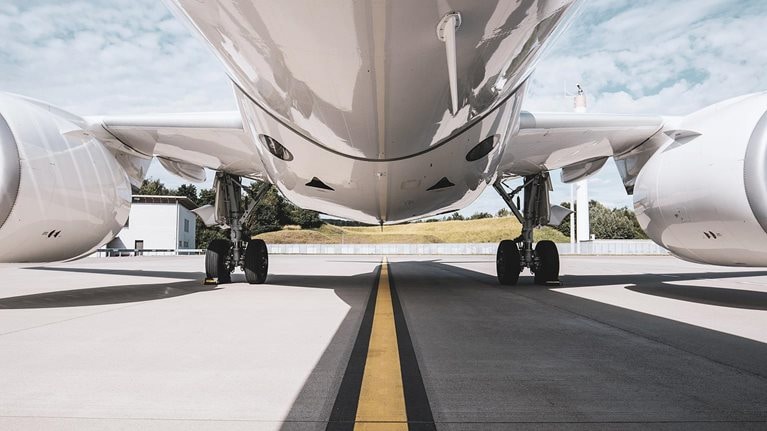
How air travel is evolving postpandemic
Travel could be a good deal this summer. Here's when plane ticket prices will peak.
Spring is springing, and according to Hopper, it’s time to start thinking about your summer vacation plans.
New data from the online booking site shows some favorable trends for travelers in the next few months, including slightly lower airfares compared with 2023 and hotel and car rental prices that are more or less flat year-over-year.
Here’s what you need to know as you prepare to book, whether you’re looking for a domestic getaway or go on an overseas adventure. It’s also not too late to take advantage of deals on some last-minute trips.
How much are spring and summer plane tickets?
According to Hopper, the best deals right now are on domestic airline tickets. Round-trip flights within the U.S. are averaging $290 in April, but prices are expected to rise in the months ahead.
Hopper’s data shows prices for domestic flights will peak between May and June at $315 on average, then will gradually fall through the summer, reaching a low of $264 on average in September.
On a call with investors discussing first-quarter earnings Wednesday, Delta Air Lines CEO Ed Bastian said summer travel demand has been pushed forward in recent years in part because schools, especially in the South, are finishing their summer breaks earlier in the year.
Is airport Wi-Fi safe to use? How to keep your information safe while traveling.
Short vs. long cruises: Which one is right for you? Here's how they compare.
This summer also will be a good time to travel internationally; Hopper data shows fares to most destinations abroad are down compared with last year.
“Airfare to international destinations continues to improve following two years of bloated prices due to quickly recovering demand, high fuel prices and supply constraints. Airfare to most major regions of the world has dropped compared to last year with the exception of trips to Canada,” Hayley Berg, Hopper’s chief economist, said in the report. “International fares remain higher than pre-pandemic levels to most regions, as higher fuel prices persist and airlines continue to rebuild capacity to many regions.”
How much will a hotel room for the spring and summer cost?
Hotel prices remain mostly flat compared with the same time last year. Rooms in the U.S. are averaging $206 a night; better deals are available in some trending international destinations like Osaka, Japan, and Istanbul, Turkey.
According to Hopper, Las Vegas, New York and Chicago remain popular destinations in the U.S.
Will car rental prices rise this summer?
Car rental prices also haven’t increased much since last year and average $42 a day, according to Hopper.
The report shows most travelers rent a car for about four days, and warm-weather destinations like Orlando and Los Angeles remain popular pickup points.
Zach Wichter is a travel reporter for USA TODAY based in New York. You can reach him at [email protected].
AAA Newsroom
Automotive, Travel, and Traffic Safety Information
55.4 Million Americans Expected to Travel for Thanksgiving
This year’s holiday forecast is a 2.3% increase over last year, third highest since 2000.

WASHINGTON, DC (November 13, 2023) – AAA projects 55.4 million travelers will head 50 miles or more from home over the Thanksgiving holiday travel period*. This year’s Thanksgiving forecast is an increase of 2.3% over last year and marks the third-highest Thanksgiving forecast since AAA began tracking holiday travel in 2000. The top two years were 2005 and 2019, respectively.
“For many Americans, Thanksgiving and travel go hand in hand, and this holiday, we expect more people on the roads, skies, and seas compared to 2022,” said Paula Twidale, Senior Vice President of AAA Travel. “Travel demand has been strong all year, and AAA’s Thanksgiving forecast reflects that continued desire to get away and spend time with loved ones.”
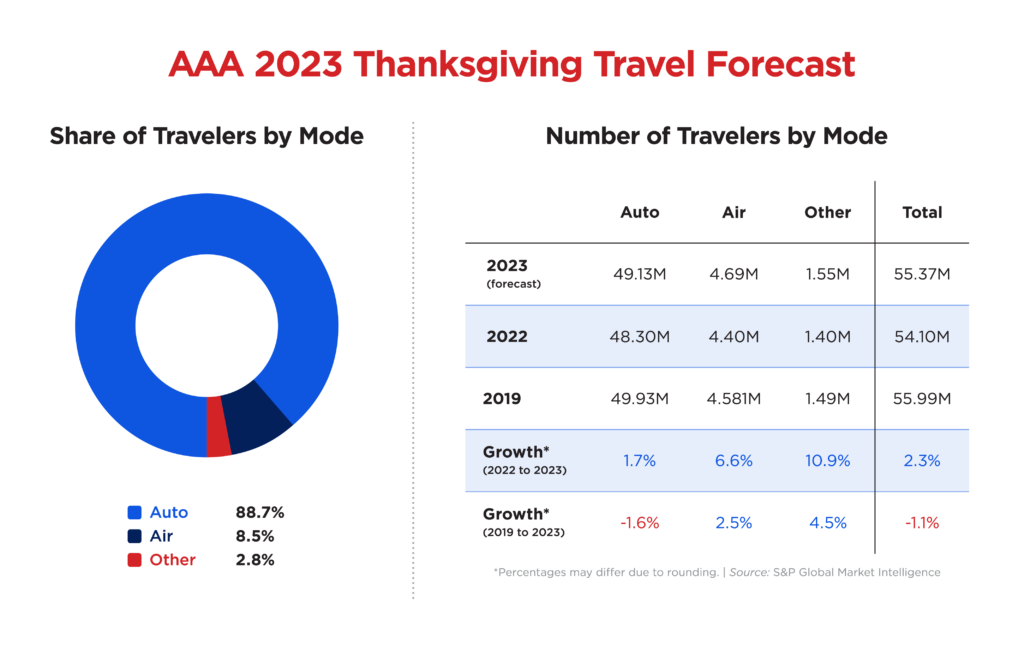
AAA expects 4.7 million people will fly over Thanksgiving, an increase of 6.6% compared to 2022 and the highest number of Thanksgiving air travelers since 2005. Tuesday and Wednesday before Thanksgiving are the busiest air travel days ahead of the holiday and the most expensive. While Sunday is typically the busiest day to return home, AAA data shows Monday is also a popular day to fly back after Thanksgiving.
The number of people traveling by cruise, bus, and train over Thanksgiving is up nearly 11% over last year. AAA expects 1.55 million travelers will head out of town using these other modes of transportation, which took a huge hit during the pandemic but have rebounded nicely. “The cruise industry, in particular, has made a remarkable comeback,” Twidale added. “Thanksgiving cruises are mostly sold out, with many travelers looking to spend the holiday at sea.”
Best/Worst Times to Drive and Peak Congestion by Metro
INRIX, a provider of transportation data and insights, expects Wednesday, November 22, to be the busiest day on the roads during the Thanksgiving holiday travel period, with average travel times as high as 80% over normal in some metro areas. INRIX recommends leaving in the morning or after 6 p.m. to avoid the heaviest holiday congestion.
“The day before Thanksgiving is notoriously one of the most congested days on our roadways. Travelers should be prepared for long delays, especially in and around major metros,” said Bob Pishue, transportation analyst at INRIX. “Knowing when and where congestion will build can help minimize holiday traffic frustrations. We advise drivers to use traffic apps, local DOT notifications, and 511 services for real-time updates.”
Please note – the times listed below are for the time zone the metro is located in. For example, Atlanta routes = ET and Los Angeles routes = PT.
Holiday Booking Prices
This holiday season, travelers are generally paying less for domestic trips compared to last year and more for international vacations. The one exception is airfare, which is slightly more expensive for domestic flights this season and a bit lower for international flights. Here’s a breakdown of average booking prices for November and December, according to AAA data.
- The average price for a domestic flight is $681, up 5% from 2022.
- The average price for an international flight is $1,231, down 5.7% from last year.
- The average price for a domestic hotel stay is $598, down 12% from 2022.
- The average price for an international hotel stay is $772, up 5% from last year.
RENTAL CARS
- The average price for a domestic rental car reservation is $590, down 20% from 2022.
- The average price for an international rental car reservation is $696, up 9% from last year.
- The average price for a domestic cruise is $1,507, down 12% compared to 2022.
- The average price for an international cruise is $2,902, up 24% from last year.
- The average price for a domestic tour is $1,058, down 15% compared to 2022.
- The average price for an international tour is $1,208, up 21% from last year.
Top Holiday Destinations
Warm weather destinations, theme parks, tourist attractions, historic sites, and cruise port cities top the list of domestic and international destinations this holiday season.
Holiday Forecast Methodology
Travel Forecast
In cooperation with AAA, S&P Global Market Intelligence developed a unique methodology to forecast actual domestic travel volumes. The economic variables used to forecast travel for the current holiday are leveraged from S&P Global Market Intelligence’s proprietary databases. These data include macroeconomic drivers such as employment, output, household net worth, asset prices including stock indices, interest rates, housing market indicators, and variables related to travel and tourism including gasoline prices, airline travel, and hotel stays. AAA and S&P Global Market Intelligence have quantified holiday travel volumes going back to 2000.
Historical travel volume estimates come from DK SHIFFLET’s TRAVEL PERFORMANCE/Monitor SM . The PERFORMANCE/Monitor SM is a comprehensive study measuring the travel behavior of U.S. residents. DK SHIFFLET contacts over 50,000 U.S. households each month to obtain detailed travel data, resulting in the unique ability to estimate visitor volume and spending, identify trends, and forecast U.S. travel behavior, all after the trips have been taken.
The travel forecast is reported in person-trips. In particular, AAA and SPGMI forecast the total U.S. holiday travel volume and expected mode of transportation. The travel forecast presented in this report was prepared the week of October 9, 2023.
*Thanksgiving Holiday Travel Period
For the purposes of this forecast, the Thanksgiving holiday travel period is defined as the five-day period from Wednesday, November 22 to Sunday, November 26.
Started in 1902 by automotive enthusiasts who wanted to chart a path for better roads in America and advocate for safe mobility, AAA has transformed into one of North America’s largest membership organizations. Today, AAA provides roadside assistance, travel, discounts, financial and insurance services to enhance the life journey of 64 million members across North America, including 57 million in the United States. To learn more about all AAA has to offer or to become a member, visit AAA.com.
About S&P Global S&P Global (NYSE: SPGI) provides essential intelligence. We enable governments, businesses and individuals with the right data, expertise and connected technology so that they can make decisions with conviction. From helping our customers assess new investments to guiding them through ESG and energy transition across supply chains, we unlock new opportunities, solve challenges and accelerate progress for the world. We are widely sought after by many of the world’s leading organizations to provide credit ratings, benchmarks, analytics and workflow solutions in the global capital, commodity, automotive markets. With every one of our offerings, we help the world’s leading organizations plan for tomorrow, today. For more information, visit www.spglobal.com .
DK SHIFFLET boasts the industry’s most complete database on U.S. resident travel both in the U.S. and worldwide. Data is collected monthly from a U.S. representative sample, adding over 60,000 traveling households annually and is used daily by leading travel organizations and their strategic planning groups. DK SHIFFLET is an MMGY Global company.
About INRIX
Founded in 2004, INRIX pioneered intelligent mobility solutions by transforming big data from connected devices and vehicles into mobility insights. This revolutionary approach enabled INRIX to become one of the leading providers of data and analytics into how people move. By empowering cities, businesses, and people with valuable insights, INRIX is helping to make the world smarter, safer, and greener. With partners and solutions spanning across the entire mobility ecosystem, INRIX is uniquely positioned at the intersection of technology and transportation – whether it’s keeping road users safe, improving traffic signal timing to reduce delay and greenhouse gasses, optimizing last mile delivery, or helping uncover market insights. Learn more at INRIX.com.
Recommended
Airline travel slowed in july as delta variant spread, economist writes.
- View Author Archive
- Email the Author
- Follow on Twitter
- Get author RSS feed
Contact The Author
Thanks for contacting us. We've received your submission.
Thanks for contacting us. We've received your submission.
Spending on airline travel slowed in July as the Delta variant spread, according to new data.
July consumer credit card data analyzed by JPMorgan Chase shows spending on air travel fell by a whopping 20 percent in late July as cases of COVID-19 rose around the world, including in the US.
“Airline spending has fallen almost 20 percent from a recent peak in mid-July, a larger decline than during the severe winter COVID wave, when spending was at much lower levels,” JPMorgan Chase economist Jesse Edgerton wrote in a research note.
That supports federal data showing that the number of people who passed through US airports was down 4 percent in the week of July 19 compared to the prior week — representing the first weekly percentage drop since April, according to the Transportation Security Administration.

Spending on restaurants also softened last month, albeit by a more modest 2.5 percent, according to JPMorgan’s report.
But Edgerton’s report also predicts that consumer spending will return to normal in a short period because the US appears to be mirroring the United Kingdom’s experience with the Delta variant, in which cases peak after three weeks and begin to subside.
“My guess is that the wave will end in a month or two … and this will end up looking like a short lived drag on spending and economic activity,” Edgerton said in an interview.
States that were first hit hard by the variant — Missouri, Arkansas and Nevada — are now seeing some of the slowest rates of new infections, and Louisiana, where the outbreak was worst, may already have peaked, according to Edgerton’s research.
The surge in airline travel kicked off in March as spring breakers took to the skies in droves . Travel ratcheted higher in the ensuing months as more Americans gained access to COVID-19 vaccinations.
But the rapid spread of the highly contagious Delta variant, which has reignited a debate about face masks, appears to have given some Americans pause about flying. Airline stocks took a beating in July on concerns about the Delta variant — and investors’ fears now appear to have been well-founded.
In July, Delta chief executive Ed Bastian told CNBC’s “Squawk Box,” “Demand has stalled as the virus has grown, particularly down here in the South, across the Sun Belt, coupled with the quarantine measures that are going in place in many of the Northern states. Those two factors are causing consumers to pause.”
Bank of America also chimed in, confirming that “the 2-year growth rate of air travel peaked four weeks ago and has taken a turn lower, potentially reflecting the risks from the Delta variant,” according to an Axios report.

Share this article:
Search Travel Market Report

- Packaged Travel
- Hotels & Resorts
- Destinations
- Retail Strategies
- Niche & Luxury
- Training & Resources
- Brian Israel
- Briana Bonfiglio
- Dan McCarthy
- Dori Saltzman
- Jennifer Arango
- Kelly Fontenelle
- Keri-Anne Slevin
- Louis Intreglia
- Sarah Milner
- Tom McCarthy

Has Revenge Travel Demand Peaked?
Photo: Shutterstock.com
With recession fears still high and domestic vacation planning for the next six months continuing to flag, the revenge travel trend everyone's been talking about might be showing signs of peaking, at least according to The Conference Board's Consumer Confidence Index .
The Conference Board is a non-profit Think Tank that tracks and analyzes business conditions, consumer attitudes, and more.
"… vacation plans within the next six months continued to flag, led largely by declines in plans to travel domestically," said Dana Peterson, chief economist at The Conference Board. "This is an important indicator of desires to spend on services ahead, which may be a signal that post-pandemic 'revenge spending' on travel may have peaked and is likely to slow over the rest of this year."
Other big-ticket expenses have slowed as well, including plans for purchasing cars and homes.
The percentage of families feeling good about their financial futures remains low, with slightly fewer saying their current financial situation is good and slightly more saying their financial future over the next six months will be better.
In June, only 28.5% of consumers said their current family financial situation is "good," down slightly from 29.2% in May. On the flip side, only 18.2% said their current family finances are "bad," which was slightly better than in May when 19.5% said their current family finances were "bad."
It's a slightly rosier outlook when looking forward. In June, 30.3% of families said they expect their family finances to be "better," up from 28.9% in May. And only 13.7% said they expect their family finances to be "worse," down from 14.9% in May.
Additionally, recession fears have dipped slightly with 69.3% of consumers in June believing that a recession is "somewhat" or "very likely" versus 73.2% in May.
In June, only 12% of consumers (all ages) reported being unable to plan for a vacation due to financial reasons. When looking only at consumers aged 55 or older, 16% said they won't be able to plan for a vacation due to financial reasons.

MOST VIEWED
- Four Spots Onboard the All-New Sun Princess We’re Not in Love With
- Delta Air Lines Is Changing the Way It Boards Flights
- Testing the Waters with Dori: The NCL Stranded Passenger "Fiasco"
- Margaritaville at Sea Offers Advisor-Only Pricing
- Lufthansa Strike Update for Monday
- Here's What Each River Cruise Line Includes
- Op-Ed: Why I Won’t Use Costco for Travel Again
- Chargebacks: The Scourge of the Travel Advisor Business
- Taiwan Earthquake Update: Train Services Resume, Flights Operating Near Schedule
- Amex GBT Agrees to Acquire Carlson Wagonlit Travel for $570 Million
- Major Cruise Changes Could Come After Baltimore’s Francis Scott Key Bridge Collapses
- The NCL Stranded Passenger “Fiasco”: Your Replies

Subscribe today to receive daily in-depth coverage, analysis of industry news, trends and issues that affect how you do business. Subscribe now for free.
Subscribe to TMR
TRAVELSAVERS Canada’s networking event featured a new trivia game.

150 travel advisors attended this year's first mega FAM.
Seasoned execs Todd Pelletier and Scott Schwisow are joining Direct Travel.
I learned the hard way the difference between cost and value.
If you’re looking for bohemian luxury, the adults-only Secrets® Tulum Resort & Beach Club—part of Hyatt Hotels & Resorts—hits all the right notes.
However, there are some signs that a slowdown could be coming.


- Your Account
Airline travel slowed in July as Delta variant spread, economist writes
Date: August 9, 2021
By Lisa Fickensher, New York Post

July consumer credit card data analyzed by JPMorgan Chase shows spending on air travel fell by a whopping 20 percent in late July as cases of COVID-19 rose around the world, including in the US, while restaurant spending softened only modestly.
“Airline spending has fallen almost 20 percent from a recent peak in mid-July, a larger decline than during the severe winter COVID wave, when spending was at much lower levels,” JPMorgan Chase economist Jesse Edgerton wrote in a research note.
That supports federal data showing that the number of people who passed through US airports was down 4 percent in the week of July 19 compared to the prior week — representing the first weekly percentage drop since April, according to the Transportation Security Administration.
The surge in airline travel kicked off in March as spring breakers took to the skies in droves . Travel ratcheted higher in the ensuing months as more Americans gained access to COVID-19 vaccinations.
But the rapid spread of the highly contagious Delta variant, which has reignited a debate about face masks, appears to have given some Americans pause about flying. Airline stocks took a beating in July on concerns about the Delta variant — and investors’ fears now appear to have been well-founded.
In July, Delta chief executive Ed Bastian told CNBC’s “Squawk Box,” “Demand has stalled as the virus has grown, particularly down here in the South, across the Sun Belt, coupled with the quarantine measures that are going in place in many of the Northern states. Those two factors are causing consumers to pause.”
Bank of America also chimed in, confirming that “the 2-year growth rate of air travel peaked four weeks ago and has taken a turn lower, potentially reflecting the risks from the Delta variant,” according to an Axios report.
But Edgerton predicts that consumer spending will return to normal in a short period because the US appears to be mirroring the United Kingdom’s experience with the Delta variant, in which cases peak after three weeks and begin to subside.
States that were first hit hard by the variant — Missouri, Arkansas and Nevada — are now seeing some of the slowest rates of new infections, and Louisiana, where the outbreak was worst, may already have peaked, according to Edgerton’s research.
Share this page:
1998-2024 © Association of Flight Attendants-CWA, AFL-CIO. About AFA | AFA International | Contact Us
- Stay informed

- February 11, 2011
Has passenger travel peaked?
Two academics from California are suggesting that passenger travel may have peaked nearly 10 years ago. The two, Lee Schipper and Adam Millard-Ball, studied the demand for car ownership and general travel in eight leading economies (USA, CDN, GB , SWE, FRA, GER, JPN, AUS) between 1970 and 2008.
Download file - form
Please complete the this form to have access to file, once submitted the file will load on the browser window.
[mailchimp_signup][/mailchimp_signup]They found passenger travel – by car, bus, plain, train, tram and metro systems – stopped growing relative to the countries’ GDP per capita in 2003. The authors admit their findings are not conclusive, and even if they are right, the trend since 2003 may not continue, but they say future projections of CO2 emissions may have to be cut back. Click Here to read the full article.
- Road freight

Interested in receiving news like this in your inbox?
- Election 2024
- Entertainment
- Newsletters
- Photography
- Personal Finance
- AP Investigations
- AP Buyline Personal Finance
- AP Buyline Shopping
- Press Releases
- Israel-Hamas War
- Russia-Ukraine War
- Global elections
- Asia Pacific
- Latin America
- Middle East
- Election Results
- Delegate Tracker
- AP & Elections
- Auto Racing
- 2024 Paris Olympic Games
- Movie reviews
- Book reviews
- Personal finance
- Financial Markets
- Business Highlights
- Financial wellness
- Artificial Intelligence
- Social Media
Far fewer young Americans now want to study in China. Both countries are trying to fix that
David Moser, an American and associate professor at Capital Normal University in Beijing, poses for a photo at the university, Friday, March 22, 2024 in Beijing, China. Only about 700 American students are studying at Chinese universities, while there are nearly 300,000 Chinese students are at U.S. schools. Without these U.S. students, “in the next decade, we won’t be able to exercise savvy, knowledgeable diplomacy in China,” warned Moser, an American linguist who went to China in the 1980s and is now tasked with establishing a new master’s program for international students at Beijing Capital Normal University. (AP Photo/Dake Kang)
David Moser, an American and associate professor at Capital Normal University in Beijing, poses for a photo at a restaurant in Beijing, China, Friday, March 22, 2024. Only about 700 American students are studying at Chinese universities, while there are nearly 300,000 Chinese students are at U.S. schools. Without these U.S. students, “in the next decade, we won’t be able to exercise savvy, knowledgeable diplomacy in China,” warned Moser, an American linguist who went to China in the 1980s and is now tasked with establishing a new master’s program for international students at Beijing Capital Normal University. (AP Photo/Dake Kang)
- Copy Link copied
WASHINGTON (AP) — Stephen Garrett, a 27-year-old graduate student, always thought he would study in China, but the country’s restrictive COVID-19 policies made it nearly impossible and now he sees interest among fellow scholars wane even after China reopened.
Common concerns, he said, include restrictions on academic freedom and the risk of being stranded in China.
These days, only about 700 American students are studying at Chinese universities, down from a peak of close to 25,000 a decade ago, while there are nearly 300,000 Chinese students at U.S. schools.
Some young Americans are discouraged from investing their time in China by what they see as diminishing economic opportunities and strained relations between Washington and Beijing.
Whatever the reason for the imbalance, U.S. officials and scholars bemoan the lost opportunities for young people to experience life in China and gain insight into a formidable American adversary.
And officials from both countries agree that more should be done to encourage the student exchanges, at a time when Beijing and Washington can hardly agree on anything else.
“I do not believe the environment is as hospitable for educational exchange as it was in the past, and I think both sides are going to need to take steps,” said Deputy Secretary of State Kurt Campbell.
The U.S. has advised its. citizens to “reconsider travel” to China over concerns of arbitrary detentions and widened use of exit bans to bar Americans from leaving the country. Campbell said this has hindered the rebuilding of the exchanges and easing the advisory is now under “active consideration.”
For its part, Beijing is rebuilding programs for international students that were shuttered during the pandemic, and Chinese President Xi Jinping has invited tens of thousands of U.S. high school students to visit.
The situation was far different after President Barack Obama started the 100,000 Strong initiative in 2009 to drastically increase the number of U.S. students studying in China.
By 2012, there were as many as 24,583 U.S. students in China, according to data by the Chinese education ministry. The Open Doors reports by the Institute of International Education, which only track students enrolled in U.S. schools and studying in China for credit, show the number peaked at 14,887 in the 2011-12 school year. But 10 years later, the number was down to only 211.
In late 2023, the number of American students stood at 700, according to Nicholas Burns, the U.S. ambassador to China, who said this was far too few in a country of such importance to the United States.
“We need young Americans to learn Mandarin. We need young Americans to have an experience of China,” Burns said.
Without these U.S. students, “in the next decade, we won’t be able to exercise savvy, knowledgeable diplomacy in China,” warned David Moser, an American linguist who went to China in the 1980s and is now tasked with establishing a new master’s program for international students at Beijing Capital Normal University.
Moser recalled the years when American students found China fascinating and thought an education there could lead to an interesting career. But he said the days of bustling trade and money deals are gone, while American students and their parents are watching China and the United States move away from each other. “So people think investment in China as a career is a dumb idea,” Moser said.
After 2012, the number of American students in China dipped but held steady at more than 11,000 for several years, according to Open Doors, until the pandemic hit, when China closed its borders and kept most foreigners out. Programs for overseas students that took years to build were shuttered, and staff were let go, Moser said.
Amy Gadsden, executive director of China Initiatives at the University of Pennsylvania, also attributed some of the declining interest to foreign businesses closing their offices in China. Beijing’s draconian governing style, laid bare by its response to the pandemic, also has given American students a pause, she said.
Garrett, who is on track to graduate this summer from Johns Hopkins University School of Advanced International Studies, said he is ambivalent about working in China, citing the lack of access to information, restrictions on discussions of politically sensitive issues and China’s sweeping anti-spying law. He had lived in Hong Kong as a teenager and interned in mainland China, and said he is still interested in traveling to China, but not anytime soon.
Some American students remain committed to studying in China, said Andrew Mertha, director of the China Global Research Center at SAIS. “There are people who are interested in China for China’s sake,” he said. “I don’t think those numbers are affected at all.”
About 40 U.S. students are now studying at the Hopkins-Nanjing center in the eastern Chinese city, and the number is expected to go up in the fall to approach the pre-pandemic level of 50-60 students, said Adam Webb, the center’s American co-director.
Among them is Chris Hankin, 28, who said he believed time in China was irreplaceable because he could interact with ordinary people and travel to places outside the radar of international media. “As the relationship becomes more intense, it’s important to have that color, to have that granularity,” said Hankin, a master’s student of international relations with a focus on energy and the environment.
Jonathan Zhang, a Chinese American studying at the prestigious Schwarzman Scholars program at Tsinghua University in Beijing, said it was more important than ever to be in China at a time of tense relations. “It’s really hard to talk about China without being in China,” he said. “I think it’s truly a shame that so many people have never stepped foot in China.”
Zhang was met with concerns when he deferred an offer at a consulting firm to go Beijing. “They’re like, ‘oh, be safe,’ or like, ‘what do you mean, you’re going back to China?’” Zhang said. “I feel like the (Chinese) government is trying with an earnest effort, but I feel like a lot of this trust has been broken.”
Gadsden said U.S. universities need to do more to nudge students to consider China. “We need to be more intentional about creating the opportunities and about encouraging students to do this deeper work on China, because it’s going to be interesting for them, and it’s going to be valuable for the U.S.-China relationship and for the world,” she said.
In China, Jia Qingguo, a professor of international relations and a national political adviser, has suggested Beijing clarify its laws involving foreign nationals, introduce a separate system for political reviews of foreign students’ dissertations, and make it easier for foreign graduates to find internships and jobs in Chinese companies.
Meanwhile, China is hosting American high school students under a plan Xi unveiled in November to welcome 50,000 in the next five years.
In January, a group of 24 students from Iowa’s Muscatine High School became the first to travel to China. The all-expenses-paid, nine-day trip took them to the Beijing Zoo, Great Wall, Palace Museum, the Yu Garden and Shanghai Museum.
Sienna Stonking, one of the Muscatine students, now wants to return to China to study.
“If I had the opportunity, I would love to go to college in China,” she told China’s state broadcaster CGTN. “Honestly, I love it there.”
Kang reported from Beijing.

Middle East: Is it safe to travel to holiday destinations as tension escalates?
Are you going to Turkey, Egypt or Israel on holiday? The Foreign Office has warned travellers to several countries to monitor advice after an Iranian attack on Israel pushed tension in the Middle East up another notch.
Thursday 18 April 2024 08:13, UK
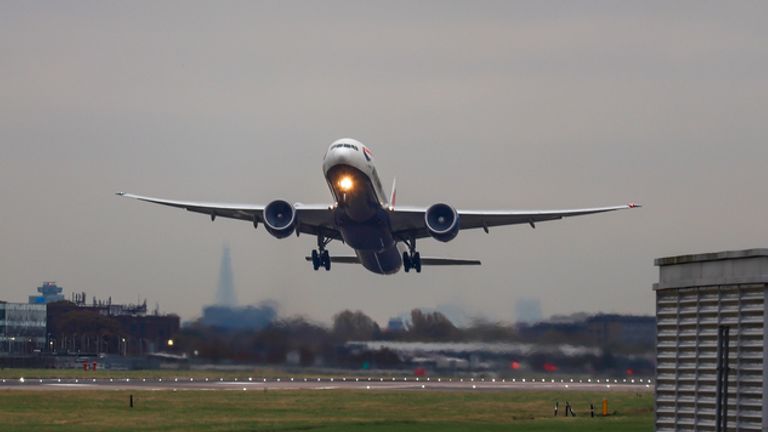
Tension in the Middle East has ratcheted up again after Iran's attack on Israel, as the world waits to see how Benjamin Netanyahu's government will respond.
With the threat of widening conflict, people due to travel through or over the Middle East may be asking if their plans may be impacted.
On Saturday, flight data showed dozens of journeys that would have travelled over the Middle East turned back after Iran fired more than 300 drones and missiles into Israel .
Here is what airlines are saying and the latest safety advice to travellers.
EasyJet scraps Tel Aviv flights
EasyJet has suspended all flights to Tel Aviv over safety concerns.
The budget airline told Sky News it has grounded its flights until 27 October at the earliest "as a result of the continued evolving situation" in the region.
Wizz Air customers could see schedule changes
Wizz Air cancelled flights to Tel Aviv on Sunday 14 and Monday 15 April before resuming its schedule.
But it said customers could experience schedule changes as it closely monitors the situation.
British Airways operating as normal
British Airways - which operates four daily return flights per week between Heathrow and Tel Aviv - said its flights were continuing to operate as planned, but it too was monitoring the situation.
Is it safe to travel to Turkey?
Turkey is a popular holiday destination for people from the UK with the Turkish Ministry of Culture and Tourism saying that last year 3.16 million Britons made the journey there, according to Travel Weekly.
Yet, it borders a number of countries that the Foreign Office advises against travel to.
The vast majority of the country is considered generally safe for tourists, with some exceptions.
The Foreign Office advises against all travel within 10km of the border with Syria , and all but essential travel to the Sirnak and Hakkari provinces.
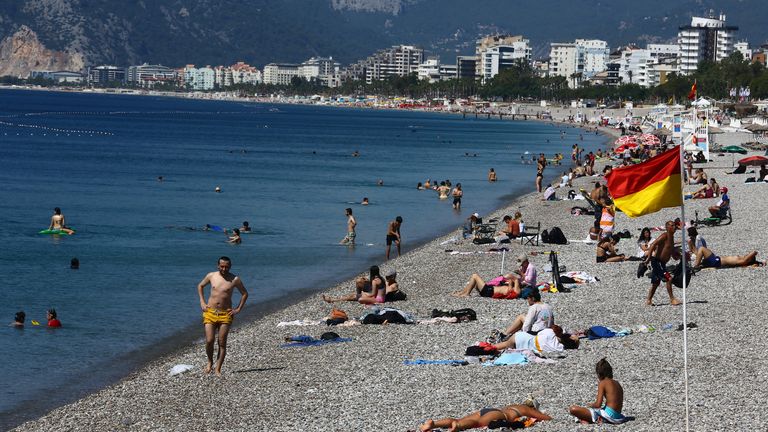
Is it safe to travel to Israel?
Some parts of Israel are considered "red zones" by the Foreign Office, with the government advising against all travel there.
For the rest of the country - including East Jerusalem and Tel Aviv - the advice is to travel only if it is essential.
Tourist Israel says around 220,000 Britons usually go to the country every year and the Foreign Office is advising against travel close to the border with Gaza, within 5km of the border with Lebanon and within 500m of the border with Syria.
You can see the full updated list of "red zones" on the Foreign Office advice pages.
Occupied Palestinian territories
The Foreign Office advises against all travel to Gaza and the West Bank.

Don't travel to Iran, Iraq, Yemen, Lebanon or Syria - Foreign Office
The Foreign Office advises against all travel to Iran, Syria, Lebanon and Yemen.
It advises against all travel to Iraq except to the Kurdistan Region of Iraq (KRI), where it advises against all but "essential travel".
Can I safely go on holiday in Egypt?
The main tourist areas in Egypt are generally considered safe, including the capital Cairo, cities along the Nile and Red Sea resorts.
Over 1.5 million British Nationals visit Egypt every year, according to analysts Gitnux, and the areas the Foreign Office warns not to travel to include the Governorate of North Sinai, where the Rafah crossing to Gaza is located, and within 20km of the border with Libya.
Read more: Are we heading for World War Three? Experts give their verdicts What are Iran's military capabilities - and where could it strike?

Keep up with all the latest news from the UK and around the world by following Sky News
Check advice on other Middle East states before you travel
Following Iran's attack on Israel, the Foreign Office issued a warning relating to several countries in the surrounding area, telling travellers to check for the latest information.
Included in this are popular destinations like Dubai (visited by more than a million Britons last year according to Travel Weekly) and Marrakech.
"On 13 April 2024 Iran carried out military action against Israel. Monitor this travel advice and other media as the situation is changing fast," the FCDO said in a statement.
The countries covered by the warning include Qatar, the United Arab Emirates, Morocco, Tunisia, Saudi Arabia, Algeria, Bahrain, Kuwait, Libya, Jordan and Oman.

Anywhere else of concern?
Cyprus is near the region and has a large UK airbase but, as yet, there is no change in travel advice to the popular country.
Related Topics
- Israel-Hamas war
- Middle East

Peeked, Peaked, Or Piqued My Interest? Are You Curious?

You see the set expression piqued my interest from time to time. But I noticed an error with this expression while I was reading, and it piqued my curiosity enough to write this short article.
I’m sure you have come across peaked my interest or peeked my interest when reading.
The problem, of course, is that the words piqued, peaked, and peeked are homonyms. When we speak, these words don’t cause us any problems because they sound the same.
However, when you write, it’s better to do a quick check to make sure you’re using the correct word before you publish.
In This Article
Why is piqued my interest, correct?
There are a lot of confusing words in English, and the word piqued is a strange one.
The word’s origin is from the mid-16th century.
It derives from the French verb piquer, which means to prick or irritate .
These two meanings still apply to the word piqued, but now one is for the noun and the other for the verb.
When you use pique as a noun , it means feeling or having a sense of irritation or displeasure resulting from an insult that affects one’s pride.
The common expression is, he left in a fit of pique.
But pique as a verb is totally different. Its sense relates to the verb prick, which means to provoke an action.
The action is to arouse interest or curiosity in something.
So you would say my curiosity was piqued, or good writing is about piquing a reader’s interest.
That’s why we collocate the verb pique with curiosity and interest.
Usage of piqued, peaked, and peeked in writing
Even though the expression’s origins are quite old, it surprisingly only came into regular use in English around 1960.
You can see the increasing use from this Ngram graph.
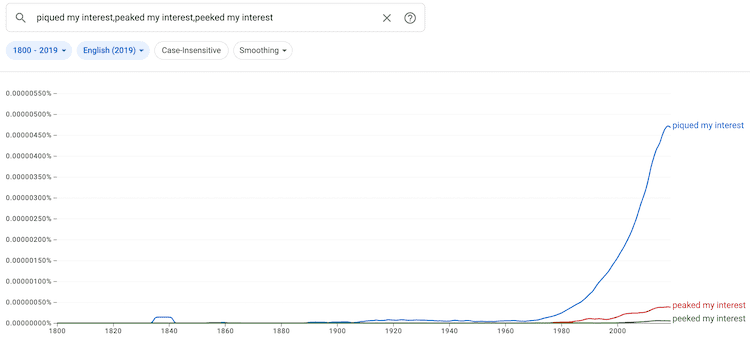
Also noticeable is that the incorrect forms started appearing at about the same time.
However, piqued my interest is noticeably the most common and correct form.
But when I did a quick search of Google books, it was easy to find many published books using either peaked or peeked my interest.
Here are a few quick examples.

These instances may have been due to inadequate editing or, for later books, self-published titles with poor proofreading or editing.
But whatever the cause, it’s clear that this expression is often confused or misused.
To avoid confusion, you could consider using a different expression, such as captured my attention, caught my eye, or got me thinking.
But to be clear, the only correct form of the expression is piqued my interest.
The other two forms are incorrect.
When you use any fixed expressions in your writing, it’s always a good idea to take a moment to check.
Why peaked and peeked are not correct

You often see the expression using these two verbs instead of piqued .
Peaked my interest is wrong. The word peak as a noun means the top point of a mountain or a similarly shaped object.
Whip egg whites to stiff peaks.
The verb peak means to reach the highest point, either literally or metaphorically.
His career peaked in the early seventies.
The word peek is more straightforward because the verb and noun both have the meaning of taking a quick look or glance at something.
I took a quick peek through the curtains to see what the neighbors were doing.
Therefore, neither peak nor peek work in the expression. You can’t reach the top of your interest or look at it quickly.
Other misused words you occasionally see in the expression are it picked my interest , it ticked my interest, or it pecked my interest.
These are not correct either. But it is understandable if a writer doesn’t take the time to check for the right word choice.
However, there is one verb that can possibly be used in place of pique.
You will sometimes see prick my interest or curiosity .
From the BBC :
So, while it’s a small but personal link to the ship, it was more than enough to prick my curiosity to want to find out more.
From the Huffington Post :
I nearly always notice something different that will prick my curiosity.
I would always prefer pique. But because the verb prick has a similar meaning, it is correct.
Other verbs to express curiosity and interest
You can also use expressions with different verbs that have a similar meaning to piqued my interest.
Aroused my curiosity
Stirred my interest
Caught my attention
Drew my attention
Captured my imagination
Attracted my attention
Captured my interest
Got my attention
Synonyms for pique
The Macmillan Thesaurus provides a handy list of synonyms and phrases for pique someone’s interest .
Inspire Attract Interest Motivate Excite Intrigue Enthuse Dazzle
To make someone feel excited, enthusiastic, or impressed.
To make someone want to know more.
Fire someone with enthusiasm.
Capture someone’s interest/imagination/attention.
Always check your homonym use
English homonyms or homophones need extra attention when you’re writing.
It’s easy to get a set expression wrong if you’re deep in your thoughts and concentrating on writing your story, article, or blog post.
But readers notice.
People will be quick to criticize you, especially if you mistype or misuse words in set expressions.
Can you bear/bare with me for a few minutes?
He pored over/poured over the manuscript looking for errors.
He waited with bated/baited breath.
To me, it’s a matter of principle/principal.
The only way to be sure you’re correct is to refer to a good dictionary and thesaurus.
But most computers and word processors have these two tools installed by default.
Writers also have a vast selection of other excellent free resources available online today.
However, taking an extra minute to check your use of set expressions is always good insurance.
Hopefully, I piqued your interest with this article.
It’s not a phrase we use very often. But it’s worthwhile knowing how to use it or replace it when the need arises.
You will undoubtedly see peaked my interest many times when you are reading online.
But at least now you know why it’s incorrect.
Related reading: Is It Walked Passed Or Walked Past?
About The Author
Derek Haines
More articles.

Reaching Out To You Or Contacting You? Who Gets A Reply?

Champing And Chomping At The Bit Are Both Correct

Do Usually And Normally Share The Same Meaning?
6 thoughts on “peeked, peaked, or piqued my interest are you curious”.
“You can’t reach the top of your interest”
…yes you can?? In EXACTLY the same way as your example “His career peaked in the early seventies”.
Think of it like a graph of level-of-interest. If my interest goes up suddenly, you’ve peaked my interest.
The reason there’s so much confusion between piqued (which I agree is originally correct) and peaked, is because it DOES make sense.
Also, words have meaning we give them. Peaked is used so widely that it stops being incorrect by virtue of so many people thinking it’s correct.
Thanks for the post Derek! I was about to comment a publication on the internet and was suddenly frozen because I felt “piqued my interest” was way too french to be the right spelling. So I changed it to peaked but found it not right at all. And then I ended-up here :)
You would be ” amazed ” how we use pique and its related verbs and meanings here in France… It’s a mess! We can say ” Piquer une colère ” ” to have a tantrum “. Also, we use the verb piquer in place of ” to steal “: ” Il a piqué mon sandwich ” ” He stole my sandwich “. There is also the expression ” Piquer du nez ” meaning ” Nose-diving ” for an aircraft. This one is commonly used in a figurative sense to say ” falling asleep “: ” J’ai piqué du nez dans le métro” ” I fall asleep in the metro “. It’s only used in situations where you fall asleep elsewhere than in a bed, because your head has to fall in front of you so your nose can “dive” toward the ground haha.
Finally we use it as ” to prick “: ” I pricked my finger with a thorn ” : ” Je me suis piqué le doigt avec une épine” and as piqued: ” He piqued my curiosity ” ” Il a piqué ma curiosité “.
I always thought it was related to “prick” because it has this meaning of being suddenly struck by interest in the same way we use striking ( frappant) in both languages to express an mental ” hit “.
Anyway, very interesting topic! Thanks again for the nice content
Thanks for your input, Greg. The relationship between French and English is always fascinating.
re: “The verb peak means to reach the highest point either literally or metaphorically. He reached the peak of his career in the seventies.”
You cited ‘peak’ as a verb, but then used it as a noun in your example.
Thanks for noticing, Jerry. I’ll have to edit that line.
Thank you so much your explanations are wonderful and easily understood and I truly appreciate your thoroughness in explaining every facet in the use of the word it was very helpful thanks again!/
Leave a Comment Cancel Reply
Your email address will not be published. Required fields are marked *
Save my name, email, and website in this browser for the next time I comment.
To prevent spam, all comments are moderated and will be published upon approval. Submit your comment only once, please.
This site uses Akismet to reduce spam. Learn how your comment data is processed .
Privacy Overview
Numbers, Facts and Trends Shaping Your World
Read our research on:
Full Topic List
Regions & Countries
- Publications
- Our Methods
- Short Reads
- Tools & Resources
Read Our Research On:
What the data says about abortion in the U.S.
Pew Research Center has conducted many surveys about abortion over the years, providing a lens into Americans’ views on whether the procedure should be legal, among a host of other questions.
In a Center survey conducted nearly a year after the Supreme Court’s June 2022 decision that ended the constitutional right to abortion , 62% of U.S. adults said the practice should be legal in all or most cases, while 36% said it should be illegal in all or most cases. Another survey conducted a few months before the decision showed that relatively few Americans take an absolutist view on the issue .
Find answers to common questions about abortion in America, based on data from the Centers for Disease Control and Prevention (CDC) and the Guttmacher Institute, which have tracked these patterns for several decades:
How many abortions are there in the U.S. each year?
How has the number of abortions in the u.s. changed over time, what is the abortion rate among women in the u.s. how has it changed over time, what are the most common types of abortion, how many abortion providers are there in the u.s., and how has that number changed, what percentage of abortions are for women who live in a different state from the abortion provider, what are the demographics of women who have had abortions, when during pregnancy do most abortions occur, how often are there medical complications from abortion.
This compilation of data on abortion in the United States draws mainly from two sources: the Centers for Disease Control and Prevention (CDC) and the Guttmacher Institute, both of which have regularly compiled national abortion data for approximately half a century, and which collect their data in different ways.
The CDC data that is highlighted in this post comes from the agency’s “abortion surveillance” reports, which have been published annually since 1974 (and which have included data from 1969). Its figures from 1973 through 1996 include data from all 50 states, the District of Columbia and New York City – 52 “reporting areas” in all. Since 1997, the CDC’s totals have lacked data from some states (most notably California) for the years that those states did not report data to the agency. The four reporting areas that did not submit data to the CDC in 2021 – California, Maryland, New Hampshire and New Jersey – accounted for approximately 25% of all legal induced abortions in the U.S. in 2020, according to Guttmacher’s data. Most states, though, do have data in the reports, and the figures for the vast majority of them came from each state’s central health agency, while for some states, the figures came from hospitals and other medical facilities.
Discussion of CDC abortion data involving women’s state of residence, marital status, race, ethnicity, age, abortion history and the number of previous live births excludes the low share of abortions where that information was not supplied. Read the methodology for the CDC’s latest abortion surveillance report , which includes data from 2021, for more details. Previous reports can be found at stacks.cdc.gov by entering “abortion surveillance” into the search box.
For the numbers of deaths caused by induced abortions in 1963 and 1965, this analysis looks at reports by the then-U.S. Department of Health, Education and Welfare, a precursor to the Department of Health and Human Services. In computing those figures, we excluded abortions listed in the report under the categories “spontaneous or unspecified” or as “other.” (“Spontaneous abortion” is another way of referring to miscarriages.)
Guttmacher data in this post comes from national surveys of abortion providers that Guttmacher has conducted 19 times since 1973. Guttmacher compiles its figures after contacting every known provider of abortions – clinics, hospitals and physicians’ offices – in the country. It uses questionnaires and health department data, and it provides estimates for abortion providers that don’t respond to its inquiries. (In 2020, the last year for which it has released data on the number of abortions in the U.S., it used estimates for 12% of abortions.) For most of the 2000s, Guttmacher has conducted these national surveys every three years, each time getting abortion data for the prior two years. For each interim year, Guttmacher has calculated estimates based on trends from its own figures and from other data.
The latest full summary of Guttmacher data came in the institute’s report titled “Abortion Incidence and Service Availability in the United States, 2020.” It includes figures for 2020 and 2019 and estimates for 2018. The report includes a methods section.
In addition, this post uses data from StatPearls, an online health care resource, on complications from abortion.
An exact answer is hard to come by. The CDC and the Guttmacher Institute have each tried to measure this for around half a century, but they use different methods and publish different figures.
The last year for which the CDC reported a yearly national total for abortions is 2021. It found there were 625,978 abortions in the District of Columbia and the 46 states with available data that year, up from 597,355 in those states and D.C. in 2020. The corresponding figure for 2019 was 607,720.
The last year for which Guttmacher reported a yearly national total was 2020. It said there were 930,160 abortions that year in all 50 states and the District of Columbia, compared with 916,460 in 2019.
- How the CDC gets its data: It compiles figures that are voluntarily reported by states’ central health agencies, including separate figures for New York City and the District of Columbia. Its latest totals do not include figures from California, Maryland, New Hampshire or New Jersey, which did not report data to the CDC. ( Read the methodology from the latest CDC report .)
- How Guttmacher gets its data: It compiles its figures after contacting every known abortion provider – clinics, hospitals and physicians’ offices – in the country. It uses questionnaires and health department data, then provides estimates for abortion providers that don’t respond. Guttmacher’s figures are higher than the CDC’s in part because they include data (and in some instances, estimates) from all 50 states. ( Read the institute’s latest full report and methodology .)
While the Guttmacher Institute supports abortion rights, its empirical data on abortions in the U.S. has been widely cited by groups and publications across the political spectrum, including by a number of those that disagree with its positions .
These estimates from Guttmacher and the CDC are results of multiyear efforts to collect data on abortion across the U.S. Last year, Guttmacher also began publishing less precise estimates every few months , based on a much smaller sample of providers.
The figures reported by these organizations include only legal induced abortions conducted by clinics, hospitals or physicians’ offices, or those that make use of abortion pills dispensed from certified facilities such as clinics or physicians’ offices. They do not account for the use of abortion pills that were obtained outside of clinical settings .
(Back to top)

The annual number of U.S. abortions rose for years after Roe v. Wade legalized the procedure in 1973, reaching its highest levels around the late 1980s and early 1990s, according to both the CDC and Guttmacher. Since then, abortions have generally decreased at what a CDC analysis called “a slow yet steady pace.”
Guttmacher says the number of abortions occurring in the U.S. in 2020 was 40% lower than it was in 1991. According to the CDC, the number was 36% lower in 2021 than in 1991, looking just at the District of Columbia and the 46 states that reported both of those years.
(The corresponding line graph shows the long-term trend in the number of legal abortions reported by both organizations. To allow for consistent comparisons over time, the CDC figures in the chart have been adjusted to ensure that the same states are counted from one year to the next. Using that approach, the CDC figure for 2021 is 622,108 legal abortions.)
There have been occasional breaks in this long-term pattern of decline – during the middle of the first decade of the 2000s, and then again in the late 2010s. The CDC reported modest 1% and 2% increases in abortions in 2018 and 2019, and then, after a 2% decrease in 2020, a 5% increase in 2021. Guttmacher reported an 8% increase over the three-year period from 2017 to 2020.
As noted above, these figures do not include abortions that use pills obtained outside of clinical settings.
Guttmacher says that in 2020 there were 14.4 abortions in the U.S. per 1,000 women ages 15 to 44. Its data shows that the rate of abortions among women has generally been declining in the U.S. since 1981, when it reported there were 29.3 abortions per 1,000 women in that age range.
The CDC says that in 2021, there were 11.6 abortions in the U.S. per 1,000 women ages 15 to 44. (That figure excludes data from California, the District of Columbia, Maryland, New Hampshire and New Jersey.) Like Guttmacher’s data, the CDC’s figures also suggest a general decline in the abortion rate over time. In 1980, when the CDC reported on all 50 states and D.C., it said there were 25 abortions per 1,000 women ages 15 to 44.
That said, both Guttmacher and the CDC say there were slight increases in the rate of abortions during the late 2010s and early 2020s. Guttmacher says the abortion rate per 1,000 women ages 15 to 44 rose from 13.5 in 2017 to 14.4 in 2020. The CDC says it rose from 11.2 per 1,000 in 2017 to 11.4 in 2019, before falling back to 11.1 in 2020 and then rising again to 11.6 in 2021. (The CDC’s figures for those years exclude data from California, D.C., Maryland, New Hampshire and New Jersey.)
The CDC broadly divides abortions into two categories: surgical abortions and medication abortions, which involve pills. Since the Food and Drug Administration first approved abortion pills in 2000, their use has increased over time as a share of abortions nationally, according to both the CDC and Guttmacher.
The majority of abortions in the U.S. now involve pills, according to both the CDC and Guttmacher. The CDC says 56% of U.S. abortions in 2021 involved pills, up from 53% in 2020 and 44% in 2019. Its figures for 2021 include the District of Columbia and 44 states that provided this data; its figures for 2020 include D.C. and 44 states (though not all of the same states as in 2021), and its figures for 2019 include D.C. and 45 states.
Guttmacher, which measures this every three years, says 53% of U.S. abortions involved pills in 2020, up from 39% in 2017.
Two pills commonly used together for medication abortions are mifepristone, which, taken first, blocks hormones that support a pregnancy, and misoprostol, which then causes the uterus to empty. According to the FDA, medication abortions are safe until 10 weeks into pregnancy.
Surgical abortions conducted during the first trimester of pregnancy typically use a suction process, while the relatively few surgical abortions that occur during the second trimester of a pregnancy typically use a process called dilation and evacuation, according to the UCLA School of Medicine.
In 2020, there were 1,603 facilities in the U.S. that provided abortions, according to Guttmacher . This included 807 clinics, 530 hospitals and 266 physicians’ offices.

While clinics make up half of the facilities that provide abortions, they are the sites where the vast majority (96%) of abortions are administered, either through procedures or the distribution of pills, according to Guttmacher’s 2020 data. (This includes 54% of abortions that are administered at specialized abortion clinics and 43% at nonspecialized clinics.) Hospitals made up 33% of the facilities that provided abortions in 2020 but accounted for only 3% of abortions that year, while just 1% of abortions were conducted by physicians’ offices.
Looking just at clinics – that is, the total number of specialized abortion clinics and nonspecialized clinics in the U.S. – Guttmacher found the total virtually unchanged between 2017 (808 clinics) and 2020 (807 clinics). However, there were regional differences. In the Midwest, the number of clinics that provide abortions increased by 11% during those years, and in the West by 6%. The number of clinics decreased during those years by 9% in the Northeast and 3% in the South.
The total number of abortion providers has declined dramatically since the 1980s. In 1982, according to Guttmacher, there were 2,908 facilities providing abortions in the U.S., including 789 clinics, 1,405 hospitals and 714 physicians’ offices.
The CDC does not track the number of abortion providers.
In the District of Columbia and the 46 states that provided abortion and residency information to the CDC in 2021, 10.9% of all abortions were performed on women known to live outside the state where the abortion occurred – slightly higher than the percentage in 2020 (9.7%). That year, D.C. and 46 states (though not the same ones as in 2021) reported abortion and residency data. (The total number of abortions used in these calculations included figures for women with both known and unknown residential status.)
The share of reported abortions performed on women outside their state of residence was much higher before the 1973 Roe decision that stopped states from banning abortion. In 1972, 41% of all abortions in D.C. and the 20 states that provided this information to the CDC that year were performed on women outside their state of residence. In 1973, the corresponding figure was 21% in the District of Columbia and the 41 states that provided this information, and in 1974 it was 11% in D.C. and the 43 states that provided data.
In the District of Columbia and the 46 states that reported age data to the CDC in 2021, the majority of women who had abortions (57%) were in their 20s, while about three-in-ten (31%) were in their 30s. Teens ages 13 to 19 accounted for 8% of those who had abortions, while women ages 40 to 44 accounted for about 4%.
The vast majority of women who had abortions in 2021 were unmarried (87%), while married women accounted for 13%, according to the CDC , which had data on this from 37 states.

In the District of Columbia, New York City (but not the rest of New York) and the 31 states that reported racial and ethnic data on abortion to the CDC , 42% of all women who had abortions in 2021 were non-Hispanic Black, while 30% were non-Hispanic White, 22% were Hispanic and 6% were of other races.
Looking at abortion rates among those ages 15 to 44, there were 28.6 abortions per 1,000 non-Hispanic Black women in 2021; 12.3 abortions per 1,000 Hispanic women; 6.4 abortions per 1,000 non-Hispanic White women; and 9.2 abortions per 1,000 women of other races, the CDC reported from those same 31 states, D.C. and New York City.
For 57% of U.S. women who had induced abortions in 2021, it was the first time they had ever had one, according to the CDC. For nearly a quarter (24%), it was their second abortion. For 11% of women who had an abortion that year, it was their third, and for 8% it was their fourth or more. These CDC figures include data from 41 states and New York City, but not the rest of New York.

Nearly four-in-ten women who had abortions in 2021 (39%) had no previous live births at the time they had an abortion, according to the CDC . Almost a quarter (24%) of women who had abortions in 2021 had one previous live birth, 20% had two previous live births, 10% had three, and 7% had four or more previous live births. These CDC figures include data from 41 states and New York City, but not the rest of New York.
The vast majority of abortions occur during the first trimester of a pregnancy. In 2021, 93% of abortions occurred during the first trimester – that is, at or before 13 weeks of gestation, according to the CDC . An additional 6% occurred between 14 and 20 weeks of pregnancy, and about 1% were performed at 21 weeks or more of gestation. These CDC figures include data from 40 states and New York City, but not the rest of New York.
About 2% of all abortions in the U.S. involve some type of complication for the woman , according to an article in StatPearls, an online health care resource. “Most complications are considered minor such as pain, bleeding, infection and post-anesthesia complications,” according to the article.
The CDC calculates case-fatality rates for women from induced abortions – that is, how many women die from abortion-related complications, for every 100,000 legal abortions that occur in the U.S . The rate was lowest during the most recent period examined by the agency (2013 to 2020), when there were 0.45 deaths to women per 100,000 legal induced abortions. The case-fatality rate reported by the CDC was highest during the first period examined by the agency (1973 to 1977), when it was 2.09 deaths to women per 100,000 legal induced abortions. During the five-year periods in between, the figure ranged from 0.52 (from 1993 to 1997) to 0.78 (from 1978 to 1982).
The CDC calculates death rates by five-year and seven-year periods because of year-to-year fluctuation in the numbers and due to the relatively low number of women who die from legal induced abortions.
In 2020, the last year for which the CDC has information , six women in the U.S. died due to complications from induced abortions. Four women died in this way in 2019, two in 2018, and three in 2017. (These deaths all followed legal abortions.) Since 1990, the annual number of deaths among women due to legal induced abortion has ranged from two to 12.
The annual number of reported deaths from induced abortions (legal and illegal) tended to be higher in the 1980s, when it ranged from nine to 16, and from 1972 to 1979, when it ranged from 13 to 63. One driver of the decline was the drop in deaths from illegal abortions. There were 39 deaths from illegal abortions in 1972, the last full year before Roe v. Wade. The total fell to 19 in 1973 and to single digits or zero every year after that. (The number of deaths from legal abortions has also declined since then, though with some slight variation over time.)
The number of deaths from induced abortions was considerably higher in the 1960s than afterward. For instance, there were 119 deaths from induced abortions in 1963 and 99 in 1965 , according to reports by the then-U.S. Department of Health, Education and Welfare, a precursor to the Department of Health and Human Services. The CDC is a division of Health and Human Services.
Note: This is an update of a post originally published May 27, 2022, and first updated June 24, 2022.

Support for legal abortion is widespread in many countries, especially in Europe
Nearly a year after roe’s demise, americans’ views of abortion access increasingly vary by where they live, by more than two-to-one, americans say medication abortion should be legal in their state, most latinos say democrats care about them and work hard for their vote, far fewer say so of gop, positive views of supreme court decline sharply following abortion ruling, most popular.
1615 L St. NW, Suite 800 Washington, DC 20036 USA (+1) 202-419-4300 | Main (+1) 202-857-8562 | Fax (+1) 202-419-4372 | Media Inquiries
Research Topics
- Age & Generations
- Coronavirus (COVID-19)
- Economy & Work
- Family & Relationships
- Gender & LGBTQ
- Immigration & Migration
- International Affairs
- Internet & Technology
- Methodological Research
- News Habits & Media
- Non-U.S. Governments
- Other Topics
- Politics & Policy
- Race & Ethnicity
- Email Newsletters
ABOUT PEW RESEARCH CENTER Pew Research Center is a nonpartisan fact tank that informs the public about the issues, attitudes and trends shaping the world. It conducts public opinion polling, demographic research, media content analysis and other empirical social science research. Pew Research Center does not take policy positions. It is a subsidiary of The Pew Charitable Trusts .
Copyright 2024 Pew Research Center
Terms & Conditions
Privacy Policy
Cookie Settings
Reprints, Permissions & Use Policy
Elon Musk's wealth has crashed by over $160 billion from its peak as Tesla's problems pile up
- Tesla shares have tumbled 62% from their peak as investors gear up for a growth slowdown.
- The stock drop has fueled an estimated $166 billion decline in Elon Musk's net worth.
- The Tesla CEO is now worth about $174 billion, down from $340 billion in November 2021.

Tesla 's mounting troubles have dealt a heavy blow to Elon Musk 's net worth.
In November 2021, the Tesla CEO held the top spot on the Bloomberg Billionaires Index , and seemed untouchable with an estimated fortune of $340 billion . He was more than three times richer than Warren Buffett at that point.
However, Musk's net worth has plunged by about $166 billion since then to $174 billion at Wednesday's close. The key driver has been Tesla stock, which has tumbled from a split-adjusted peak of $415 in 2021 to $155 — a 62% decline.
Related stories
The share-price slump has slashed Tesla's market capitalization from north of $1.2 trillion to below $490 billion. Musk's net worth has taken a big hit from the decline because his 13% stake in the automaker makes up a big chunk of his wealth.
Musk's start to this year has also been dismal relative to his peers in the 12-digit club. He topped the Bloomberg rich list with a $229 billion fortune in January, but his net worth has crashed by $55 billion, or 24%, since then.
The Tesla and SpaceX CEO now ranks fourth in the wealth rankings, behind LVMH's Bernard Arnault , Amazon's Jeff Bezos , and Meta's Mark Zuckerberg .
Moreover, Musk is the only one of the world's 13 richest people whose net worth has declined this year. He's lost more money on paper than anyone on the list has gained, including Zuckerberg who's up almost $50 billion.
Tesla's stock has tumbled in recent months due to mounting concerns about the company. Musk told employees over the weekend that more than 10% of the company's global workforce would be laid off, signaling demand for EVs is faltering.
The automaker delivered fewer cars than expected to customers last quarter, and has made price cuts that threaten to erode its profit margins.
Moreover, Musk is fending off fierce competition from Chinese rivals like Buffett-backed BYD, and has repeatedly underscored the painful impact of higher interest rates on customer demand.
Musk's fortune isn't completely tied to Tesla. He also owns an estimated 42% stake in SpaceX, the space exploration company valued at $180 billion in December, and a roughly 79% stake in X after he acquired Twitter in 2022 and rebranded it last year.
Watch: How Elon Musk makes and spends his billions
- Main content
- Skip to main content
- Keyboard shortcuts for audio player
'Conan O'Brien Must Go' is side-splitting evidence of life beyond late night TV

Eric Deggans

Conan O'Brien dresses as a Viking in Norway. Conaco/Max hide caption
Conan O'Brien dresses as a Viking in Norway.
To be honest, when I first heard Conan O'Brien was ending his TV talk show in 2021, I assumed news that he might turn to variety shows and online programs to continue his career was some combination of face-saving and wishful thinking.
But after watching the four episodes of his new Max series Conan O'Brien Must Go , it's now obvious — even to a thickheaded critic like me — that leaving late night TV really was liberating for O'Brien. He's leveraged his unique sensibility into several different podcasts, a deal with Sirius XM , specials featuring other stand-up comics and now this travel series for Max — which resembles jokey specials he did for cable channel TBS back in the day.
And as the late night TV genre crumbles under sagging viewership and the decline of traditional media, O'Brien's renaissance also provides an example for the future — where fertile comedy minds and talented performers can spread their work over a much larger canvas.

Pop Culture Happy Hour
Is conan o'brien the best 'hot ones' guest ever discuss., learning a lesson from 'hot ones'.
O'Brien already made a splash recently with his brilliantly maniacal appearance on the interview-while-eating-hot-wings show Hot Ones , slobbering over hot sauces while claiming, as he was checked over by a fake doctor, that "I'm fine! I'm perfectly f*****g fine!"
This is the place where O'Brien shines — he's called it "this strange phantom intersection between smart and stupid" — and it's on full, freakish, super silly display in every episode of Conan O'Brien Must Go .
The conceit of the show is pretty simple. O'Brien heads overseas to visit average folks in Norway, Argentina, Thailand and Ireland who had once Zoomed in to speak with him on the podcast Conan O'Brien Needs a Fan . Sometimes the visits seem like a surprise — he catches one aspiring Norwegian rapper in shorts and Crocs after popping up on his doorstep — and others seem a bit more planned, including his visit to a radio show with about four listeners in Buenos Aires.
Each episode begins with a solemn monologue which sounds like it is delivered by the film world's most eccentric voice, German filmmaker and actor Werner Herzog (he's not credited in the show and when asked, a publicist at Max shared a quote from O'Brien: "I can neither confirm nor deny the voice in question.")
The torturous accent by "Herzog" makes every line sound absurdly hilarious, describing O'Brien as "the defiler ... with dull, tiny eyes ... the eyes of a crudely painted doll ... he scavenges in distant lands, uninvited, fueled by a bottomless hunger for recognition and the occasional selfie."
Now that's smart. And oh so stupid.
A funhouse mirror version of a travel show

O'Brien performs onstage with a fan in Norway Conaco/Max hide caption
O'Brien performs onstage with a fan in Norway
Fans of O'Brien's Conan Without Borders specials on TBS already know what his style is when he tackles a travel show — throwing himself into outrageous reactions and situations while working his quirky brand of improvised conversations with hapless bystanders.
In the Max series Conan O'Brien Must Go , that includes O'Brien offering screechy vocals onstage during a performance of a Norwegian emo/rap band. Or asking provocative questions of a couple therapist/sex expert. Or getting beat up in a "fight" with a 10-year-old boy in a bar.
It's all an excuse for O'Brien to unleash his energetic wit, taste for silly absurdity and skill at drawing laughs from sympathetic — if often befuddled — strangers. Whether you enjoy this special will depend on how you feel about O'Brien's style, which can feel a bit like the world's best class clown doing everything possible to make you crack a smile.
(Rent a family in Norway so they can say goodbye when he gets on a SeaCraft? Check. Get local artists to paint a mural of O'Brien, a soccer star and The Pope on the side of a building in Argentina? Double check.)

'Conan O'Brien Needs A Friend' Is A Joke Name For A Podcast — Sort Of
But what amazes in a larger sense is how O'Brien has turned his sensibility into a comedy brand to fuel work on many different platforms. And, at age 60, with more than 30 years as a comedy star, he's been released from the shackles of any genre to shine wherever he chooses — whether it's an episode of Hot Ones or a streaming service which sometimes looks like a collision between True Detective and 90 Day Fiancé .
Leaving late night TV as late night left him
I'm old enough that I started covering TV not long after O'Brien made his first move from the shadows of life as a comedy writer – he worked on Saturday Night Live and The Simpsons — to succeed David Letterman in 1993 as host of NBC's show Late Night (now hosted by Seth Meyers). Back then, NBC gave O'Brien years to figure out the show, honing his smartly serious comedy in a way that would inspire then-teenage fans like Seth Rogen and Bill Hader .
O'Brien left NBC after a disastrous deal where the network tried to make him host of its venerated late night program The Tonight Show and also keep its former host Jay Leno at the network. He moved to a late night show on TBS in 2010, but even then, there was a sense that his creativity was a bit hemmed in by the format.

After 28 Quirky Years, Conan O'Brien Is Leaving Late Night
By the time he left his TBS show Conan for good, it seemed O'Brien was already caught in a trend which would hobble other late night shows — as young viewers consumed his content online and ratings on cable dropped.
Now, with a podcast and digital media company worth many millions and growing status as a TV comedy legend still willing to do almost anything for a laugh, O'Brien is proving there is a successful life beyond late night.
Particularly, if you have the talent to play the fool while leaving little doubt you're also the smartest person in the room.

IMAGES
VIDEO
COMMENTS
It also marks a 1% increase from the May 2023 index rating of 103. At its lowest point during the early days of the pandemic, the Travel Health Index dipped to 20 in April 2020, a sign travel ...
Has America's air travel boom peaked? July 31, 2023 Updated Mon., July 31, 2023 at 9:27 a.m. A passenger walks past Delta planes on the tarmac at LaGuardia Airport in New York.
2:58. The air travel boom in the US appears to be fading. Purchases by US consumers directly from major domestic airlines declined across the board in the second quarter, marking the first drop in ...
The April 2021 U.S. Travel Association Travel Price Index shows a 9.5% year-over-year increase. There's also a 30.1% increase in transportation costs for the same period, primarily because of ...
Increased vaccination rates, pent-up demand and accumulated savings helped spur demand for global tourism through 2021 as nationwide lockdowns eased and countries rolled back border restrictions ...
Although domestic leisure travel has bounced back, border and testing restrictions have slowed the pace for U.S. travelers heading overseas. According to data from the International Trade ...
The implication, of course, being that if demand for air travel has peaked, so, too, has cruise and land travel that is dependent on those flights. Yet, in conversations with travel advisors and ...
But overall, viewing the boom on a holistic basis, it's steadily growing — it's not declining. Some of my best clients are just now taking their first trip in three years. I think that ...
According to Virtuoso, a network of travel agencies that cater to HNWs and UHWNs and sell around $30 billion in luxury travel annually, its members have seen a 69% jump in sales versus 2019 ...
What they're saying: Looking at Chase debit and credit card transaction data, JPMorgan economist Jesse Edgerton observed spending in travel and entertainment softened in early July as infections accelerated. "Most notably, airline spending has fallen almost 20% from a recent peak in mid-July, a larger decline than during the severe winter ...
Here are some of the top ways Americans may be able to reduce the overall cost of a trip, according to travel experts. 1. Be flexible with trip timing and location. Being flexible with your plans ...
A McKinsey survey reveals traveling to be the second-most-desired activity among respondents (in first place: dining out). In the United States, air travel has hit two million daily passengers, closer to the prepandemic level of around 2.5 million than to the low of around 90,000, in April 2020. Hotel reservations and rental-car bookings are ...
The latest blog post from OAG, which tracks and analyzes air traffic data globally, suggests that the air travel recovery may have peaked within the last week.The world's airlines offered just ...
Hopper's data shows prices for domestic flights will peak between May and June at $315 on average, then will gradually fall through the summer, reaching a low of $264 on average in September. On ...
Aixa Diaz Media Relations Manager. [email protected]. 11/13/2023. WASHINGTON, DC (November 13, 2023) - AAA projects 55.4 million travelers will head 50 miles or more from home over the Thanksgiving holiday travel period*. This year's Thanksgiving forecast is an increase of 2.3% over last year and marks the third-highest Thanksgiving ...
Bank of America also chimed in, confirming that "the 2-year growth rate of air travel peaked four weeks ago and has taken a turn lower, potentially reflecting the risks from the Delta variant ...
Has Revenge Travel Demand Peaked? by Dori Saltzman / June 30, 2023. Photo: Shutterstock.com. With recession fears still high and domestic vacation planning for the next six months continuing to ...
"Airline spending has fallen almost 20 percent from a recent peak in mid-July, a larger decline than during the severe winter COVID wave, when spending was at much lower levels," JPMorgan Chase economist Jesse Edgerton wrote in a research note. ... Bank of America also chimed in, confirming that "the 2-year growth rate of air travel ...
Mar 3, 2023 - 1.29pm. The price of airfares on some of the country's most popular routes remain more than 50 per cent higher than before the COVID-19 pandemic, with official data showing ...
Why Business Travel Has Peaked. Yes, the Covid-19 pandemic will recede and business travelers will feel safe about traveling, as will their hosts. Getting a global green light on the health and safety front will unleash demand for business travel. Unfortunately, that demand will be sharply and permanently diminished for these four reasons: ...
Has passenger travel peaked? Two academics from California are suggesting that passenger travel may have peaked nearly 10 years ago. The two, Lee Schipper and Adam Millard-Ball, studied the demand for car ownership and general travel in eight leading economies (USA, CDN, GB , SWE, FRA, GER, JPN, AUS) between 1970 and 2008.
There is no joy in recognising that business travel has peaked and that our industry will never return to its pre-Covid level. Like it or not, there are significant implications for our industry's future. Yes, the Covid-19 pandemic will recede and business travellers will feel safe about traveling, as will their hosts.
Has Travel Peaked? Goldman Downgrades Priceline, TripAdvisor . IBD. Licensing. MAX A. CHERNEY; 01:55 PM ET 01/27/2016 Related news Stocks With Rising Composite Ratings: Tripadvisor. 3/18/2024 ...
The U.S. has advised its. citizens to "reconsider travel" to China over concerns of arbitrary detentions and widened use of exit bans to bar Americans from leaving the country. Campbell said this has hindered the rebuilding of the exchanges and easing the advisory is now under "active consideration."
Monitor this travel advice and other media as the situation is changing fast," the FCDO said in a statement. The countries covered by the warning include Qatar, the United Arab Emirates, Morocco ...
Why peaked and peeked are not correct. You often see the expression using these two verbs instead of piqued. Peaked my interest is wrong. The word peak as a noun means the top point of a mountain or a similarly shaped object. Whip egg whites to stiff peaks. The verb peak means to reach the highest point, either literally or metaphorically.
Guttmacher says that in 2020 there were 14.4 abortions in the U.S. per 1,000 women ages 15 to 44. Its data shows that the rate of abortions among women has generally been declining in the U.S. since 1981, when it reported there were 29.3 abortions per 1,000 women in that age range.
CNN —. Dubai International Airport, one of the world's busiest aviation hubs, remained in disarray Thursday after unprecedented heavy rain led to airliners having to negotiate flooded runways ...
However, Musk's net worth has plunged by about $166 billion since then to $174 billion at Wednesday's close. The key driver has been Tesla stock, which has tumbled from a split-adjusted peak of ...
After 28 Quirky Years, Conan O'Brien Is Leaving Late Night. By the time he left his TBS show Conan for good, it seemed O'Brien was already caught in a trend which would hobble other late night ...